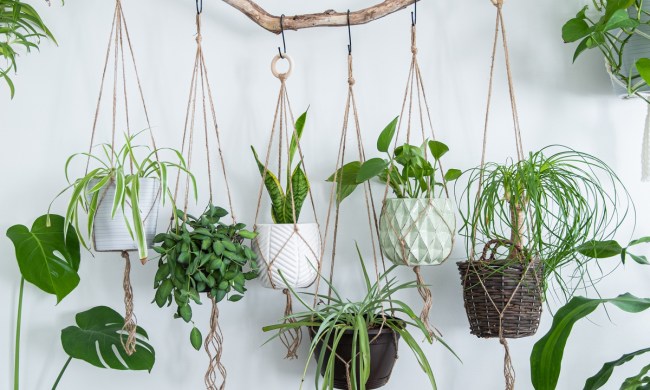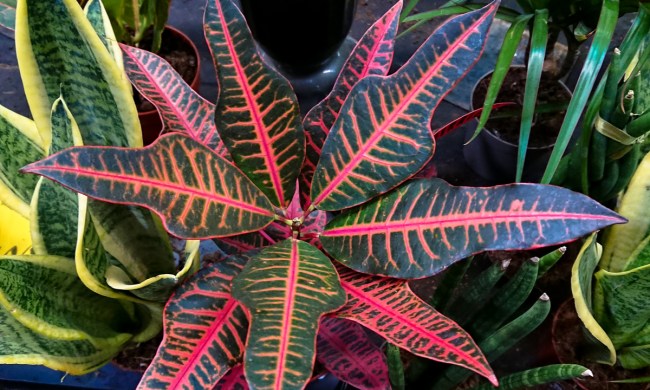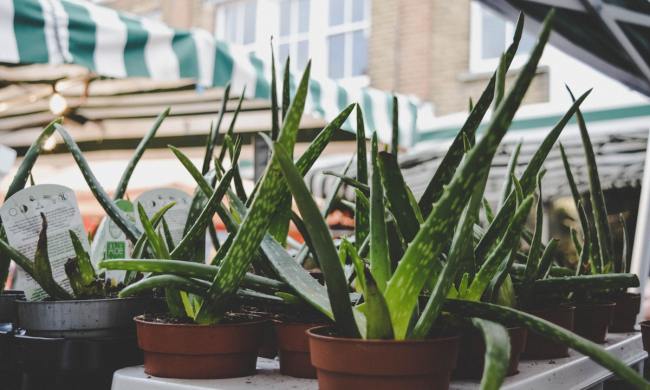Towering trees and bold poinsettias aren’t the only foliage plants that tell you it’s time for the holidays. When it comes to channeling the Yuletide spirit, festive Christmas herbs and spices are great for brewing teas, garnishing dishes, and infusing the home with aromatherapy to counter holiday stress. There are tons of herbs you can grow during the holiday season, but which ones are the best for your celebrations? This guide to Christmas herbs will help you get your garden in order for the season.
Peppermint
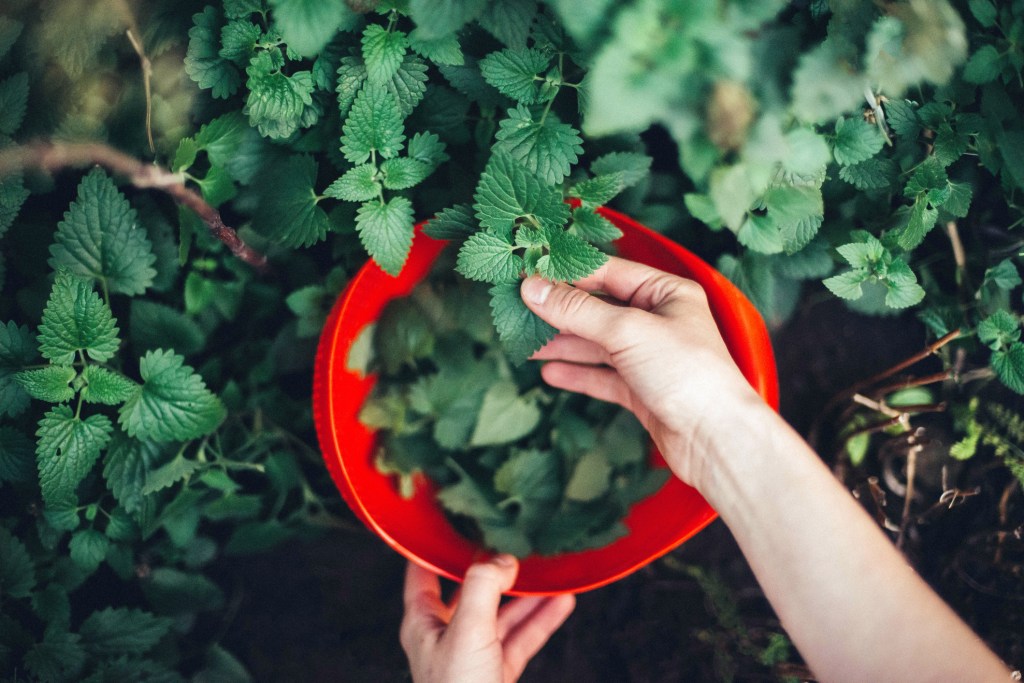
Perhaps the most famous holiday herb of them all is peppermint, which is beloved for its fresh and cooling taste. We love a striped candy cane as much as the next person, but you can definitely go straight to the source if you don’t have much of a sweet tooth. Peppermint, like other mints, is also easy to grow in an indoor herb garden.
Peppermint seeds only take about two weeks to germinate, but propagating peppermint by stem cuttings is faster. Even easier is getting ready-to-go seedlings from your local nursery. In any case, peppermint is a prolific grower that thrives in full sun to partial shade and moist (but not soggy) soil.
To keep it growing, cut it back regularly — it’s a pretty easy-going herb that can even survive down to climate zone 3. Whether you use it as a garnish, turn it into tea, or try your hand at making a peppermint mocha, peppermint’s soothing and cooling smell will give you those cheerful holiday vibes.
Lavender

Known for its delicate flowers and shrubby shape, lavender more or less has evergreen appeal, but it’s a great plant to have around for the holidays, thanks to its calming benefits. If you’re busy as a bee planning events and buying gifts, you could use lavender’s herbaceous aromatherapy to keep the stress under control.
Lavender doesn’t take long to germinate from seed, but it grows fairly slowly during its first year of planting. If possible, it’s ideal to get lavender from cuttings or as a whole plant at your nursery or grocery store. You can add lavender to cocktails, teas, and desserts, but it also works as a stand-alone plant in the home.
As a drought-tolerant plant, it does well with full sun and well-draining soil. If you notice leggy stems and don’t get enough sun in your home, consider investing in grow lights to help your lavender thrive. Many varieties, such as English lavender, are hardy down to climate zone 5 and can withstand subzero temperatures.
Rosemary

One of the go-to holiday herbs, rosemary has a woodsy, piney flavor that shines in savory dishes, such as roasted chicken. Decorating your home with Christmas rosemary also looks great, too — sprigs of its needle-like leaves can add a whimsical touch, whereas a full plant, which you can find in grocery stores, can almost look like a mini tree.
This herb doesn’t tend to grow from seed very fast, but it’s easy to grow it from cuttings or find an established plant at nurseries. It thrives in full sun and well-draining soil, and you want to make sure not to overwater it. Rosemary is also a tender herb that does best in Mediterranean climates, so be sure to keep it indoors during winter even if you pick out a hardy variety.
Thyme

Thyme is sometimes associated with breezy summer months, but it’s a common herb in winter recipes, such as soups and stuffings. While typically harvested in the summer, you could get it established during the cooler months, as long as you keep it warm and beneath plenty of light. Thyme doesn’t grow from seed too easily, so it’s best to get a cutting from a friend or grab a pot from a nursery.
If you’re growing it with other winter herbs, consider rosemary, as they both enjoy warm, sunny conditions and can tolerate drought. While thyme is cold hardy, remember it does best between 65 and 85 degrees Fahrenheit, so inside a warm room is more ideal than on a chilly patio during wintertime. In addition to traditional thyme, you could also grow lemon thyme for a citrusy twist.
Sage
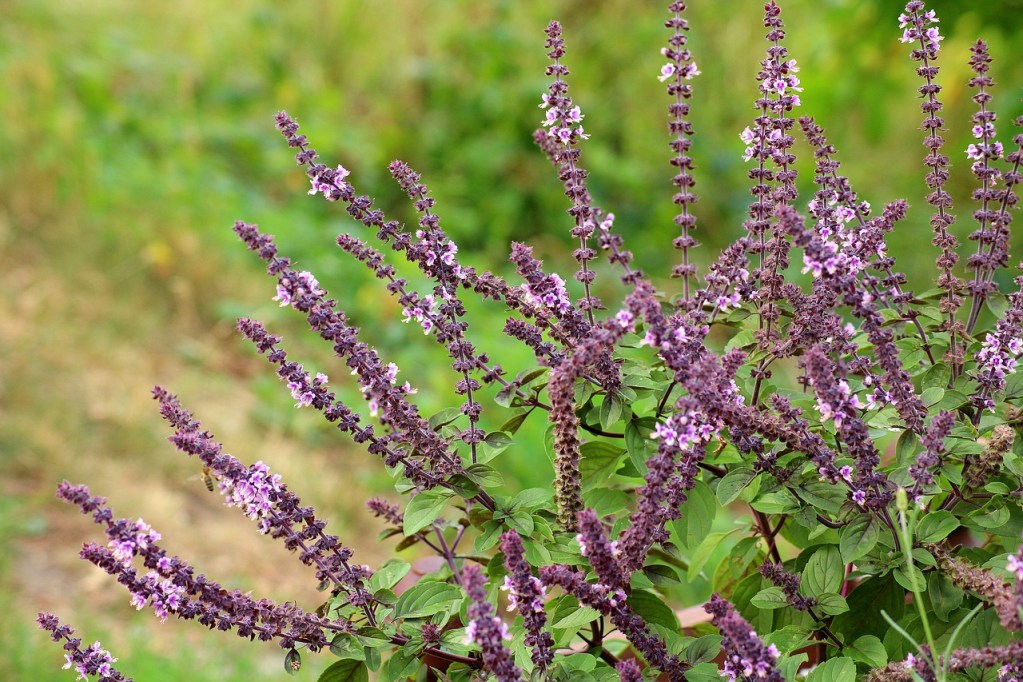
Another excellent herb to add to your Christmastime kitchen garden is sage, which goes well with stuffings, winter squashes, risotto dishes, and cured meats, thanks to its earthy and peppery flavor. Sage does best in full sun and well-draining soil, and you never want to overwater it.
Sage is relatively easy to grow from seed, although it takes about three weeks for the seeds to germinate. If you can, find a full plant to work with as you embark on your winter festivities!
Bay leaf

Coming from the laurel tree, bay leaves feature a peppery flavor that makes them ideal for all the soups and stews you’ll be enjoying during the holidays — you can use the leaves as you’re cooking and take them out before serving. The great thing about harvesting from your own plant is that fresher leaves yield stronger flavors.
While the laurel tree can survive down to 20 degrees Fahrenheit, it might be a good idea to overwinter yours as a container plant for more robust growth. The laurel tree enjoys loose, well-draining soil and partial to full sun. An established laurel tree can tolerate drought, but keeping one in a container will up its watering needs as potted plants dry out quicker.
Parsley

Parsley is an excellent herb for any holiday, and Christmas is no exception! This flavorful herb can be used in most savory dishes, from stuffing to soup and even salads. Make a fresh parsley pesto with lemon or add a few leaves to your winter squash soup and you’ll see why this herb is a must-have for any holiday season.
If it has been established before the frost arrives, parsley can survive in cold weather. While it is much happier during warm weather, your parsley can survive if the temperature dips below freezing. However, it will need protection from freezing rain and snow. To keep your parsley in the best health, consider growing it in a container and moving it indoors during fall and winter. As long as it has a sunny window and regular water, your parsley will thrive indoors.
If you’ve already decided which Christmas herb (or herbs!) you want to grow, the next part is to determine its needs based on your conditions. One critical factor is temperature: Is it warm enough to leave your plants outside or should you overwinter them indoors? Lighting is another important thing to keep in mind. If it’s not warm enough, do you have access to a window with bright southern exposure, or should you invest in grow lights? These questions will help you keep your plants as healthy as possible for the holidays.
Once you’ve ironed out all the logistics, it’s time to start growing your Christmas herbs. Before you know it, you’ll be incorporating herbs into all your favorite holiday foods and maybe even using sprigs of them as decorations around your home!


